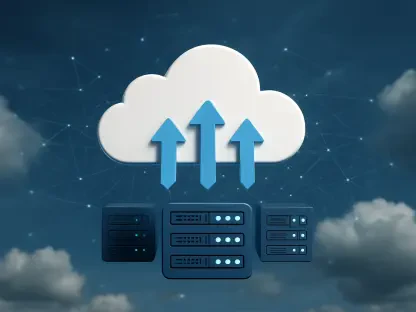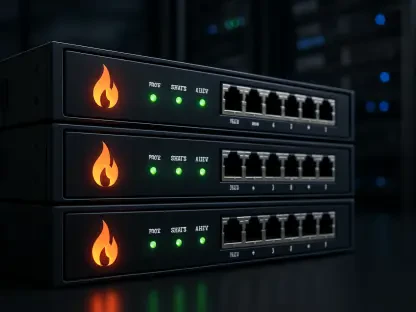In an era where businesses are accelerating their migration to cloud environments to gain unparalleled scalability and operational flexibility, the urgency for cutting-edge security measures has reached a critical level, especially as multi-cloud and hybrid setups become the norm. Organizations face an array of sophisticated threats—ranging from misconfigurations and over-privileged identities to vulnerabilities in containerized applications—that traditional on-premise tools are ill-equipped to handle. The stakes are high, as data breaches and compliance failures can lead to significant financial and reputational damage. This exploration delves into the most impactful cloud security tools shaping the landscape in 2025, highlighting vendors that are pioneering comprehensive, innovative platforms to safeguard the entire cloud lifecycle. These solutions, often built around Cloud-Native Application Protection Platforms (CNAPPs), integrate vital functionalities such as Cloud Security Posture Management (CSPM), Cloud Workload Protection (CWPP), and Cloud Infrastructure Entitlement Management (CIEM). By addressing the dynamic challenges of modern cloud architectures, these tools aim to provide seamless visibility, automated threat response, and robust protection across diverse environments like Amazon Web Services (AWS), Microsoft Azure, and Google Cloud Platform (GCP). The focus here is not just on reacting to threats but on proactively preventing them, leveraging advanced technologies to stay ahead of rapidly evolving risks.
Evolving Dynamics of Cloud Protection
Integration as a Core Principle
The shift toward unified security platforms marks a significant evolution in how organizations approach safeguarding their cloud assets. CNAPPs have emerged as a cornerstone, combining multiple security disciplines into a single, cohesive framework. This integration eliminates the inefficiencies of managing disparate point solutions, offering a streamlined way to oversee posture management, workload protection, and identity entitlements. For businesses operating across multi-cloud environments, this means a reduction in vendor sprawl and a clearer, more centralized view of their security posture. The ability to monitor and manage risks through a single pane of glass is particularly valuable in setups involving AWS, Azure, and GCP, where complexity can otherwise obscure potential vulnerabilities. Vendors leading this trend prioritize not just consolidation but also scalability, ensuring that as organizations grow, their security framework can adapt without requiring constant overhauls.
Beyond the technical benefits, integrated platforms address a critical operational challenge: the burden on security teams, who face increasing pressure in today’s environment. With cyber threats becoming more frequent and sophisticated, manual processes are no longer viable for managing the scale and speed of cloud environments. A unified approach minimizes the need for constant switching between tools, reducing human error and allowing teams to focus on strategic priorities rather than repetitive tasks. This trend also fosters better compliance with industry standards, as comprehensive visibility makes it easier to identify and rectify gaps in security posture. As the cloud security market matures, the push for integration reflects a broader recognition that fragmented solutions are unsustainable in the face of today’s dynamic threat landscape.
Harnessing Automation and Intelligence
Automation, powered by artificial intelligence (AI), stands at the forefront of modern cloud security strategies, transforming how threats are detected and mitigated. This technology enables platforms to sift through vast amounts of data in real-time, identifying anomalies and prioritizing risks before they escalate into full-blown incidents. For organizations managing sprawling multi-cloud setups, this capability is indispensable, as it cuts down response times dramatically and alleviates the pressure on understaffed security teams. AI-driven insights go beyond mere detection, offering predictive analytics that can foresee potential attack vectors based on emerging patterns. This proactive stance is a game-changer in an environment where threats can materialize and spread within seconds.
Equally important is the role of automation in remediation processes, where manual intervention often proves too slow to be effective, especially in the fast-paced environment of cloud security. By automating routine tasks like patching misconfigurations or revoking excessive permissions, these tools ensure that vulnerabilities are addressed at the speed of the cloud itself. This is particularly critical for businesses with limited resources, as it allows them to maintain robust security without expanding their teams. Furthermore, the integration of machine learning means these systems continuously improve, learning from past incidents to refine their threat detection algorithms. The result is a more resilient defense mechanism that evolves alongside the ever-changing tactics of cybercriminals, providing a level of adaptability that static, traditional tools cannot match.
Spotlight on Industry Innovators
Balancing Deployment Models
One of the most debated aspects of cloud security today is the choice between agentless and agent-based deployment models, each catering to distinct organizational needs. Agentless solutions, championed by vendors like Wiz and Orca Security, focus on rapid deployment and ease of use, scanning entire cloud environments without the need to install software on individual workloads. This approach offers immediate visibility into risks across multi-cloud setups, making it ideal for businesses that prioritize speed and minimal operational overhead. By avoiding the complexities of agent management, these tools can be implemented quickly, often within minutes, providing a comprehensive overview of vulnerabilities, misconfigurations, and identity issues. However, their limitation lies in the lack of real-time, inline threat blocking, which may leave some organizations seeking additional layers of runtime protection.
In contrast, agent-based or hybrid models, as seen in offerings from CrowdStrike and SentinelOne, incorporate lightweight agents to deliver real-time protection during runtime operations. These solutions are tailored for environments where immediate threat response is non-negotiable, such as in high-stakes industries handling sensitive data. The trade-off is the added complexity of deploying and managing agents across diverse workloads, which can introduce operational friction, especially in large-scale or rapidly scaling setups. Yet, for many enterprises, this depth of protection—capable of stopping threats as they occur—outweighs the administrative burden. The choice between these models often hinges on specific business priorities, whether it’s the simplicity of agentless scanning or the robust, active defense of agent-based systems.
This divergence in deployment strategies underscores a broader industry reality: there is no universal solution for cloud security. Organizations must assess their cloud architecture, operational tempo, and risk tolerance to determine which model aligns best with their goals. For instance, a fast-growing startup might lean toward agentless tools to avoid slowing down innovation, while a financial institution could opt for agent-based systems to ensure continuous, real-time monitoring. As vendors refine their offerings, many are exploring hybrid approaches that combine the strengths of both models, aiming to deliver comprehensive coverage without sacrificing ease of implementation. This flexibility reflects the maturing nature of the market, where customization is becoming as critical as capability.
Profiling Market Leaders
Among the standout vendors, Wiz has carved a niche with its agentless scanning technology, enabling full-stack visibility across multi-cloud environments almost instantly. Its CNAPP integrates CSPM, CWPP, and CIEM, with a particular strength in attack path analysis that connects disparate risks to highlight the most exploitable vulnerabilities. This makes it a top choice for enterprises and rapidly scaling businesses that need quick, broad coverage without the hassle of agent deployment. However, its premium pricing structure may pose a barrier for smaller organizations, and the absence of in-line blocking capabilities could necessitate supplementary tools for runtime protection. Despite these constraints, its focus on simplicity and depth of insight positions it as a leader for those prioritizing proactive risk management.
Palo Alto Networks, through its Prisma Cloud platform, offers a mature, all-encompassing CNAPP that consolidates a wide array of security functions, reducing the need for multiple vendors. Its integration with network and endpoint security products creates a unified security fabric, appealing to large enterprises seeking a trusted, comprehensive solution. The platform’s extensive capabilities come with a degree of complexity and cost that might overwhelm smaller users or those with simpler cloud setups. Nevertheless, for organizations with intricate, multi-layered environments, the depth of protection and the ability to streamline security operations make this a compelling option. Its established reputation in the cybersecurity space further adds a layer of reliability for risk-averse businesses.
CrowdStrike’s Falcon platform distinguishes itself with a cloud-native architecture that blends agentless posture management with lightweight agents for real-time threat prevention. Enhanced by advanced threat intelligence and proactive threat hunting via Falcon OverWatch, it caters to organizations requiring high-performance security across both endpoints and cloud workloads. The premium cost and reliance on agents for certain features may deter some, particularly those with limited budgets or a preference for minimal operational overhead. Still, for industries where immediate threat blocking is critical, such as finance or healthcare, this platform’s ability to deliver autonomous, rapid response stands out as a significant advantage, ensuring protection keeps pace with the speed of modern threats.
Expanding the Vendor Landscape
Microsoft’s Defender for Cloud provides a seamless fit for organizations deeply embedded in the Azure ecosystem, offering a cost-effective CNAPP with multi-cloud support and integration with Microsoft Sentinel for Security Information and Event Management (SIEM) capabilities. Its strength lies in affordability and ease of use for Microsoft-centric businesses, simplifying security management within familiar infrastructure. However, for setups relying on diverse, non-Microsoft stacks, its effectiveness may be limited, as its optimizations are heavily tailored to Azure environments. This makes it an ideal choice for enterprises already invested in Microsoft technologies but less versatile for those with broader, heterogeneous cloud strategies seeking uniform protection across platforms.
Fortinet’s Security Fabric ensures consistent security policies across on-premise and cloud environments through centralized management and automation, making it a strong contender for organizations with existing Fortinet infrastructure. Its ability to bridge traditional and cloud security is a key asset for hybrid setups, though its product-focused approach may lack the deep integration seen in newer, cloud-native solutions. For businesses transitioning to the cloud while maintaining legacy systems, this platform offers continuity and familiarity. Yet, those seeking cutting-edge, cloud-specific innovations might find its offerings less specialized compared to competitors focused solely on cloud-native challenges.
SentinelOne’s Singularity Cloud Security platform emphasizes AI-powered autonomous protection, automating threat prevention and response across endpoints and cloud workloads with a unified agent. This focus on reducing response times through automation is particularly valuable for organizations aiming to minimize manual intervention and streamline operations. While its reliance on agents and associated costs could be a consideration for some, the platform’s ability to simplify management and enhance efficiency appeals to businesses under pressure to maintain security with limited resources. Its strength lies in balancing advanced technology with practical deployment, catering to a wide range of security maturity levels.
Diverse Solutions for Varied Needs
Trend Micro, with decades of cybersecurity experience, delivers robust protection for hybrid cloud environments through Trend Vision One™, focusing on comprehensive workload security controls. Its long-standing expertise makes it a reliable choice for complex setups requiring proven solutions, though its platform may feel less integrated compared to newer, cloud-native competitors. For organizations managing intricate hybrid architectures, this tool offers stability and depth, addressing a broad spectrum of risks. However, businesses seeking the latest in seamless platform integration might look elsewhere for more modern, cohesive frameworks that prioritize user experience alongside protection.
Zscaler’s Zero Trust Exchange redefines cloud security by focusing on secure access to applications for distributed workforces, moving away from traditional VPNs and firewalls. While not a conventional CNAPP, its approach is vital for remote and hybrid work environments, ensuring safe connectivity without compromising speed. Its limitation lies in a narrower focus on access rather than comprehensive workload protection, which may require pairing with other tools for full coverage. For companies with geographically dispersed teams, this solution’s emphasis on Zero Trust principles provides a forward-thinking way to secure user interactions with cloud resources, aligning with modern workforce trends.
Cisco’s SecureX leverages extensive networking expertise to offer a unified management platform within its broader security portfolio, making it ideal for organizations already using Cisco infrastructure. Its strength lies in providing a familiar, integrated experience for existing users, though its generalist approach may lack the specialized focus of dedicated cloud security vendors. For enterprises with significant investments in Cisco technologies, this platform ensures consistency across network and cloud environments. However, those prioritizing cloud-specific innovations might find more tailored solutions elsewhere, as its broader scope can sometimes dilute the depth of cloud-focused capabilities.
Orca Security mirrors Wiz with its agentless SideScanning™ technology, delivering rapid visibility and attack path analysis across multi-cloud setups with minimal operational overhead. Its CNAPP consolidates multiple security functions, appealing to enterprises needing comprehensive coverage without deployment complexity. Like Wiz, its pricing and lack of real-time blocking capabilities are potential drawbacks for some users. Nevertheless, for organizations valuing speed and ease of implementation over runtime protection, this tool offers a powerful way to gain immediate insights into risks, ensuring that security keeps pace with the agility of cloud adoption.
Navigating the Path Forward
Matching Solutions to Strategic Goals
Selecting the right cloud security tool demands a thorough evaluation of an organization’s unique cloud architecture, budgetary constraints, and existing technology investments. Factors such as the complexity of multi-cloud setups, the need for real-time protection versus ease of deployment, and the level of security maturity all play pivotal roles in this decision. For instance, businesses heavily integrated with specific ecosystems like Azure may find tailored solutions more cost-effective, while those with distributed workforces might prioritize secure access over workload protection. The diversity among leading vendors ensures there are options to address nearly every context, but alignment with long-term strategic objectives remains critical to maximizing the value of any chosen platform.
This evaluation process also involves considering scalability and adaptability, as cloud environments are rarely static. A tool that meets current needs must also accommodate future growth, whether through expanding multi-cloud support or integrating emerging technologies like AI. Additionally, compatibility with existing security workflows and staff expertise can influence the ease of adoption and overall effectiveness. By mapping out these requirements, organizations can narrow down their options to vendors whose strengths directly address their most pressing pain points. This strategic alignment not only enhances security outcomes but also ensures that resources are allocated efficiently, avoiding the pitfalls of mismatched or underutilized tools.
Building Resilience Through Proactive Defense
Looking ahead, the emphasis on proactive threat prevention offers a blueprint for building resilient cloud security programs that anticipate risks rather than merely react to them. Tools that incorporate attack path analysis, threat intelligence, and human expertise enable organizations to identify and neutralize vulnerabilities before they are exploited. This forward-thinking approach is particularly vital in dynamic cloud environments where new threats emerge constantly, often exploiting overlooked misconfigurations or identity gaps. By prioritizing prevention, businesses can reduce the likelihood of costly breaches and maintain trust in their digital operations.
Equally important is the role of continuous improvement, as seen in platforms that leverage machine learning to refine their capabilities over time, ensuring they stay ahead of potential risks. Encouraging a culture of regular assessment and adaptation ensures that security measures evolve in tandem with both technological advancements and shifting threat landscapes. Organizations should also explore partnerships with vendors that offer robust support and training, empowering teams to fully utilize the chosen tools. As the cloud security domain continues to mature, staying informed about emerging trends and innovations will be key to maintaining a strong defensive posture. By adopting these proactive strategies, businesses can confidently navigate the complexities of cloud environments, safeguarding their assets while driving innovation and growth.









